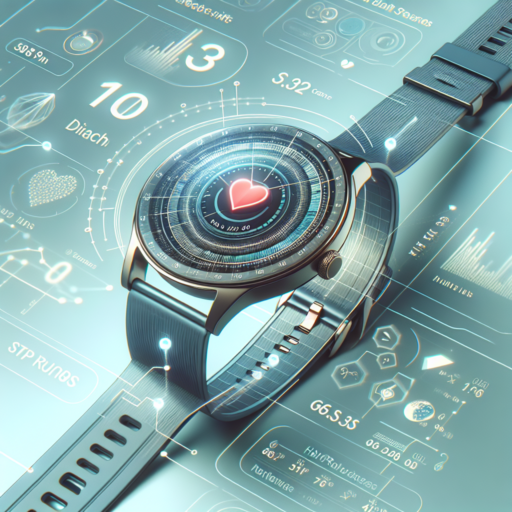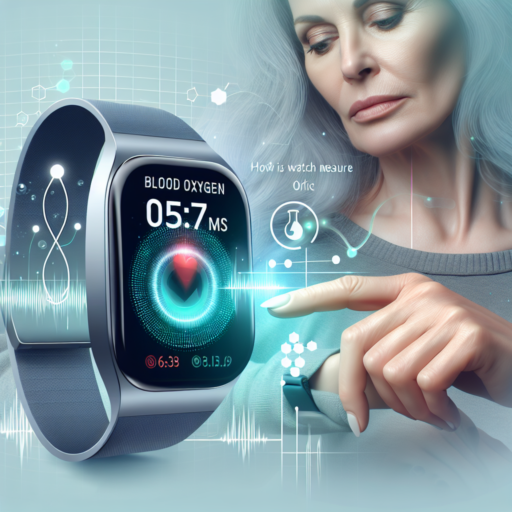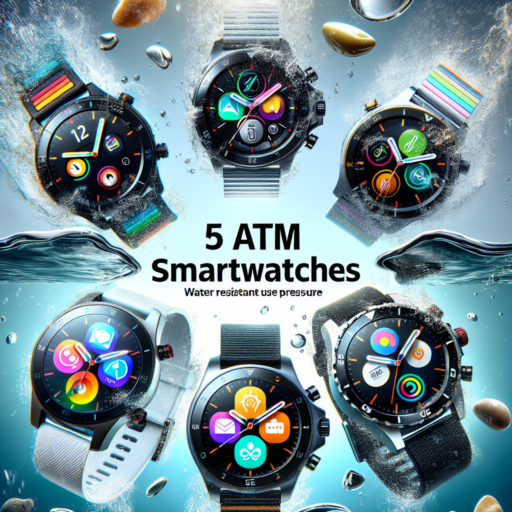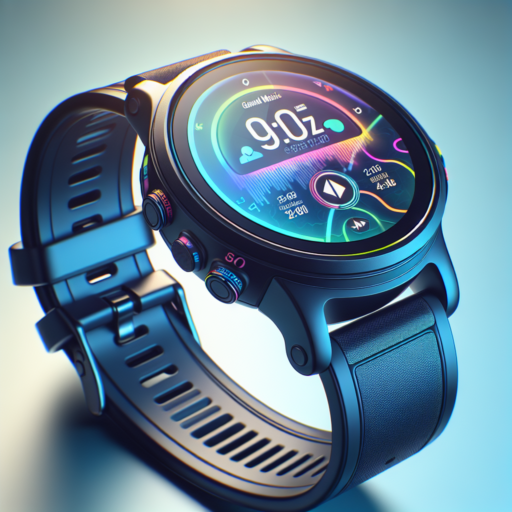Understanding How Smartwatches Measure Distance
Smartwatches have evolved into essential tools for fitness enthusiasts and casual users alike, thanks to their ability to track and measure various physical activities. One of the most common questions about these wearable devices is how they manage to measure the distance one travels, whether it’s for a casual walk, a run, or even a marathon. The technology behind this capability combines hardware sensors and sophisticated algorithms to provide users with accurate data on their physical activities.
The Role of Accelerometers and GPS
At the core of distance measurement in smartwatches are two key components: accelerometers and GPS technology. Accelerometers are crucial for detecting movement. They monitor changes in velocity and direction, allowing the smartwatch to track step count and estimate the distance traveled without GPS. However, for more precise distance tracking, especially over longer distances or in areas with a clear view of the sky, GPS technology comes into play. GPS provides exact location data, enabling the smartwatch to calculate the distance covered with a high degree of accuracy.
Algorithms and Calibration
The hardware in the smartwatch is just one part of the equation. Sophisticated algorithms play a critical role in interpreting the data collected from the sensors. These algorithms take into account not just the steps taken but also the user’s stride length, which can vary significantly from one person to another. Calibration processes also contribute to enhancing the accuracy of distance measurements. Users typically have the option to calibrate their smartwatches by providing personal data such as height and weight or by performing calibration runs. This input helps the device to refine its calculations and offer more personalized and precise metrics.
The interplay between advanced sensors and algorithms allows smartwatches not just to measure distance, but to do so with an impressive level of accuracy. As technology continues to advance, we can expect these measurements to become even more precise, further enhancing the ability of smartwatches to serve as valuable tools for tracking physical activity and fitness progress.
No se han encontrado productos.
The Technology Behind Distance Tracking in Smartwatches
The ability of smartwatches to track the distance covered during physical activities is a feature cherished by fitness enthusiasts and professionals alike. The seamless integration of advanced sensor technology and sophisticated algorithms has paved the way for this innovative functionality. In essence, the technology behind distance tracking in smartwatches revolves around the synergy of GPS tracking systems and accelerometer sensors, providing accuracy and efficiency in capturing every step of your journey.
GPS Tracking Systems
GPS, or Global Positioning System, technology is a cornerstone in measuring distance accurately in smartwatches. By connecting to a network of satellites orbiting the Earth, GPS-equipped smartwatches can pinpoint your exact location in real-time. This capability enables the device to track your movements precisely, calculating the distance covered whether you’re walking, running, or cycling. The beauty of GPS technology lies in its high precision, which ensures that the data reflected on your smartwatch provides a truthful representation of your physical exertions.
Accelerometer Sensors
Beyond GPS technology, smartwatches utilize accelerometer sensors to detect movement in three-dimensional space. These sensors perform crucially when GPS signals are weak or unavailable, such as indoors or dense urban areas. By measuring acceleration forces, smartwatches can infer speed and displacement, offering users a comprehensive overview of their activity levels throughout the day. It is the combination of GPS tracking and accelerometer data that allows for the intricate calculation of distance, making it possible for users to understand and improve their physical performance over time.
Step Counting vs. GPS: Methods of Measuring Distance
In the world of fitness tracking and outdoor activities, understanding the distances you cover can be crucial for measuring progress and setting goals. Two predominant methods stand out in tracking these distances: step counting and GPS tracking. Each method offers unique advantages and operates fundamentally differently, providing various data accuracy levels and user experiences.
Understanding Step Counting
Step counting, often facilitated by pedometers or accelerometers in smart devices, estimates the distance walked or run by calculating the number of steps taken. This method relies on the user’s stride length to estimate the overall distance covered. Its simplicity makes it accessible for the everyday user, providing a convenient way to gauge daily activity levels without the need for complex technology or connectivity. However, the accuracy of step counting can vary significantly based on the calibration to an individual’s stride and the device’s sensitivity.
Exploring GPS Tracking
On the other hand, GPS (Global Positioning System) tracking utilizes a network of satellites to pinpoint exact locations on Earth, calculating distances traveled with a high degree of accuracy. This method is preferred for activities that cover larger distances or occur in varied terrains, such as cycling, hiking, or long-distance running. Unlike step counting, GPS tracking is less affected by stride variations and can map routes with precision, offering insights into speed, elevation changes, and real-time location. However, it generally requires more power, potentially limiting the device’s battery life, and may not function optimally in areas with poor satellite visibility.
Choosing between step counting and GPS depends largely on the activity in question and the level of accuracy desired. While step counting offers simplicity and ease of use for everyday fitness tracking, GPS provides detailed data and broader insights for more rigorous training and exploration. Each method has its place in the landscape of distance measuring, catering to different needs and preferences among users.
Accuracy of Smartwatch Distance Measurement
When evaluating the accuracy of distance measurement by smartwatches, several factors come into play. These devices utilize a blend of sensors, including GPS and accelerometers, to estimate distance traveled. This approach allows for variances in accuracy, which can be influenced by both the environment and the device’s technology. Users often find discrepancies in the distances measured, even on the same routes, raising questions about the reliability of these metrics for tracking progress in physical activities.
GPS-based Measurement: Devices that rely on GPS for distance tracking typically offer higher accuracy in open spaces, where the signal is unobstructed. However, the presence of tall buildings, trees, or even cloudy weather can significantly affect the signal quality, leading to less accurate distance measurements. This phenomenon is known as «GPS drift,» which can result in overestimations or underestimations of the actual distance covered.
Accelerometer-based Measurement: For environments where GPS is unreliable, smartwatches may use accelerometers to estimate distance traveled. This methodology is based on counting steps and multiplying by a predetermined step length. While this can be effective, its accuracy is heavily dependent on the user’s movement patterns and the algorithm’s ability to adapt to individual stride lengths. Variability in walking or running gait, such as changes in speed or elevation, can further complicate distance estimates.
Enhancing Accuracy:
- Calibration: Many smartwatches offer calibration features, allowing users to adjust their devices based on known distances. This can significantly improve the accuracy of distance measurements, especially when using accelerometer-based tracking.
- Update Frequency: Regularly updating the smartwatch’s firmware can also enhance measurement accuracy, as manufacturers often release updates to improve sensor algorithms and address known issues.
- External Sensors: For those seeking higher accuracy, external sensors like foot pods can be paired with smartwatches. These devices provide more precise data on steps and strides, improving overall distance estimation.
Calibrating Your Smartwatch for Better Distance Measurements
Calibrating your smartwatch is a vital process to ensure the accuracy of distance measurements, which is especially crucial for athletes and fitness enthusiasts who rely on their wearables to track their workouts and progress. It’s not just about having data; it’s about having data you can trust. The calibration process helps in refining the device’s sensors and algorithms, adjusting them based on your specific stride length and pace, among other factors.
Most smartwatches come with an initial calibration but to achieve pinpoint accuracy, regular recalibration is recommended. This might sound daunting, but it’s a straightforward process. Initially, find a measured track or path; ensuring the known distance is crucial for accurate calibration. Next, ensure your smartwatch’s software is up to date, as manufacturers frequently release updates that improve accuracy and functionality.
Focusing on the actual calibration, it usually involves walking or running at your average pace for a set distance, which allows your device to measure the stride and apply the data to its algorithms. This process might need to be repeated several times to ensure consistency and reliability of data. Remember, recalibrating your smartwatch periodically and after major software updates maintains its accuracy, ensuring the distance measurements you’re tracking are as precise as possible.
Comparing Smartwatch Brands on Distance Measurement Capabilities
When it comes to finding the perfect smartwatch, one of the key considerations for many fitness enthusiasts and runners is the accuracy of distance measurement capabilities. Different brands offer varying levels of precision, using a combination of GPS technology and motion sensors to track every step you take. In this discussion, we will dive into how some of the leading brands stack up against each other in terms of distance tracking accuracy.
GPS Accuracy Across Brands
The cornerstone of effective distance measurement in smartwatches is GPS accuracy. Brands like Garmin and Suunto are renowned for their precision in outdoor environments, leveraging high-quality GPS chips that minimize discrepancies during runs or hikes. Apple and Samsung, while known more for their smart features, have also made significant strides in enhancing GPS accuracy in their latest models, ensuring that users can track their walks, runs, and rides with confidence.
Motion Sensors and Algorithm Efficiency
Beyond GPS, smartwatch brands differentiate themselves with the sophistication of their motion sensors and algorithms. For instance, Fitbit’s proprietary algorithms work hand-in-hand with accelerometer data to provide a nuanced look at user movement, adjusting for steps, stride length, and other variables to estimate distance traveled on treadmills where GPS is unavailable. Similarly, Garmin employs advanced algorithms that compensate for GPS drift in challenging environments like dense urban areas or heavily wooded trails, ensuring more accurate distance readings.
Understanding the nuances of distance measurement capabilities is crucial when comparing smartwatch brands. The choice between brands may ultimately come down to how well their technology meets your specific activity needs and environmental contexts. Whether you prioritize GPS accuracy for long outdoor adventures or sophisticated sensors for your daily gym routine, there is a smartwatch brand tailored to your fitness tracking requirements.
How to Maximize Your Smartwatch’s Distance Tracking Feature
Maximizing the distance tracking feature of your smartwatch can significantly enhance your fitness journey by providing accurate and invaluable insights into your activities. Whether you’re a runner, a hiker, or someone who simply enjoys long walks, there are several strategies to ensure you get the most out of your device.
Optimize Device Placement
For optimal distance tracking, the placement of your smartwatch matters. Wear your smartwatch firmly around your wrist, ensuring it’s not too tight or too loose. A snug fit allows the sensors to accurately read your movements and track distance more precisely. Additionally, make sure the smartwatch is positioned correctly on your wrist, as per the manufacturer’s recommendations, to enhance its GPS and accelerometer accuracy.
Regularly Update Your Smartwatch Software
Manufacturers frequently release software updates that can improve the functionality and accuracy of your smartwatch, including its distance tracking feature. Ensuring your device is always running the latest software version can make a significant difference in the accuracy of the data recorded. These updates may include enhancements to the GPS functionality, which is crucial for distance tracking. Check for updates regularly and install them as soon as they’re available.
Calibrate Your Smartwatch
Calibration is key to maximizing the distance tracking accuracy of your smartwatch. Many devices offer the option to calibrate for a more accurate measurement of your steps and distance traveled. This process typically involves entering your step length or running a certain distance at a known pace so the watch can adjust its sensors. By calibrating your smartwatch, you can significantly improve the accuracy of the distance tracking, providing you with data you can trust for your training and fitness goals.
The Role of Software and Algorithms in Distance Tracking
In the rapidly evolving world of technology, software and algorithms have emerged as fundamental elements in the realm of distance tracking. These mechanisms not only enhance the accuracy of tracking movements over various terrains but also facilitate a seamless integration of data across multiple platforms. The process, fundamentally ruled by sophisticated algorithms, interprets complex spatial data, converting it into actionable insights that can be crucial for a wide range of applications.
At the core of distance tracking technologies, algorithms play a pivotal role in determining the most efficient routes and calculating distances with precision. Through the application of geospatial algorithms, software can analyze data points collected from GPS and other sensors to delineate the path traveled, even in challenging environments. This capability is incredibly beneficial for industries relying on logistics and delivery services, where accurate distance tracking is essential for optimizing routes and reducing operational costs.
Beyond navigation and optimization, software and algorithms in distance tracking are instrumental in enhancing user experiences in fitness and health applications. By tracking the distance covered, individuals can monitor their progress, set goals, and evaluate their performance over time. This personalized data, powered by advanced algorithms, motivates users to achieve their fitness objectives, showcasing the profound impact of these technologies in personal health and wellness sectors.
Real-Life Applications of Distance Measurement Using Smartwatches
The integration of distance measurement capabilities in smartwatches has revolutionized how we track physical activity and navigate our environment. These sophisticated devices utilize a blend of GPS technology and motion sensors to provide accurate and valuable data for a variety of real-world applications. From enhancing athletic training to ensuring personal safety, the functionality of measuring distance through smartwatches significantly impacts our everyday lives.
Enhanced Athletic Training
For athletes and fitness enthusiasts, smartwatches serve as virtual coaches. By accurately measuring distances covered during runs, cycles, or swims, individuals can meticulously analyze their performance, set realistic goals, and monitor improvement over time. This precise distance tracking allows for the customization of training programs to optimize athletic performance, making it an indispensable tool for serious sports practitioners and hobbyists alike.
Navigation and Exploration
Adventure seekers and outdoor enthusiasts find a reliable companion in smartwatches equipped with distance measurement functions. These devices help in planning routes, estimating travel times, and navigating unfamiliar terrains without the need for carrying multiple gadgets. Whether it’s trekking through remote wilderness areas or exploring urban landscapes, smartwatches provide users with the confidence to venture further, knowing their journey’s length and direction are continually monitored.
Personal Safety and Security
The ability to measure distance in real-time also plays a crucial role in personal safety and security. For individuals walking or running alone, especially in less familiar or populated areas, smartwatches can track the distance to safety points or calculate the best route back to a starting location. This feature not only offers peace of mind but can also be life-saving in emergency situations, contributing significantly to the overall well-being of the user.
Future Developments in Smartwatch Distance Measurement Technologies
The realm of smartwatch development is on the brink of revolutionary advancements, especially in the area of distance measurement technologies. As tech enthusiasts and fitness aficionados eagerly await what the future holds, innovations in GPS technology and sensor accuracy stand at the forefront of this evolution.
One of the key areas of focus is the improvement of GPS algorithms. Future smartwatches are expected to leverage enhanced algorithms that significantly reduce the margin of error in distance tracking. This means that outdoor athletes can look forward to more precise data on their running or biking distances, greatly enhancing their training effectiveness. Moreover, the advent of dual-frequency GPS capabilities promises to solve the common problems associated with signal interference caused by buildings in urban environments, making for a much-awaited upgrade in distance measurement accuracy.
Another exciting development lies in the integration of advanced sensors and machine learning. These technologies aim to provide a holistic view of the wearer’s activity by combining traditional distance metrics with physiological data. For instance, future smartwatches might be able to adjust distance measurements based on the individual’s stride length, which can vary according to pace, gradient, and fatigue levels. This personalized approach to distance tracking not only presents a major leap forward in accuracy but also in how we understand and analyze physical performance and health metrics.




